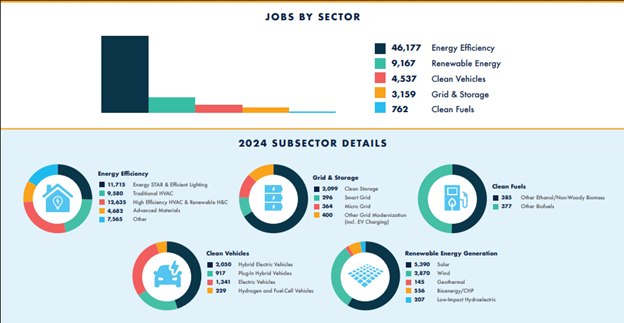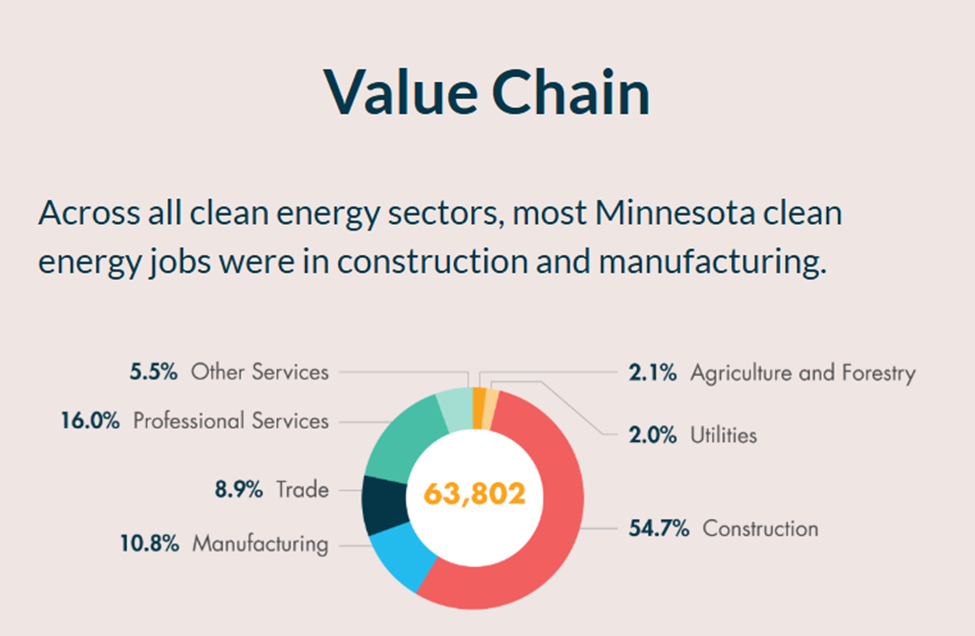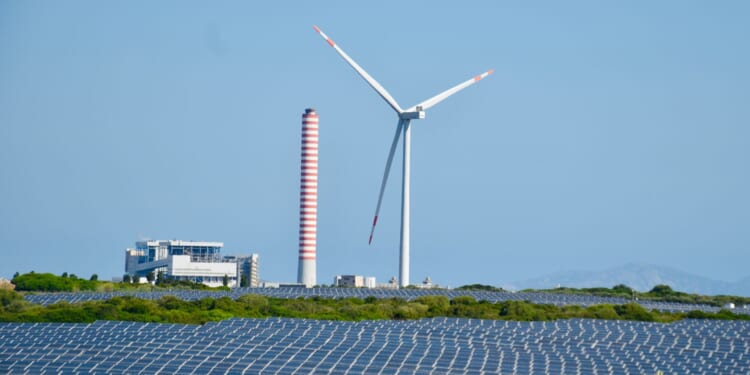It’s the time of year again when Center of the American Experiment needs to reiterate a vital point: energy projects exist to produce energy, not jobs. And projects from wind and solar projects produce little energy and, usually, unproductive, often temporary jobs. Increasing productivity is the key to economic growth and raising living standards, and these projects don’t fit the bill.
Clean Energy Economy Minnesota recently released its annual jobs report for clean energy fields. MPRNews reports the findings, in brief:
Its latest report released Wednesday estimates that number grew to almost 64,000 in 2024, a 2.6 percent increase from the previous year. Jobs in clean energy-related fields grew more than two times faster than the state’s total workforce.
Of note is that the “two times faster” is only 2.6 percent, while the overall economy in Minnesota grew one percent. This is not necessarily the behavior of an economic engine. American Experiment has covered the same report over several years (2017, 2019, 2020). The 2018 numbers counted 61,047 total jobs, and in 2024 there is now 63,802.
Energy efficiency is 72.3% of the “clean energy” jobs
Another important point: two-thirds of the jobs that Clean Energy Economy Minnesota is counting as “clean energy” fields are not what most people would consider clean energy jobs:
About two-thirds of Minnesota’s clean energy jobs are in energy efficiency, such as upgrading heating and cooling systems, installing LED lighting or manufacturing power-saving appliances…
In fact, the fact sheet of the report finds that 46,177 jobs are “energy efficiency,” jobs, with 11,715 in “Energy STAR and Efficient Lighting,” 12,635 in “High Efficiency HVAC & Renewable H&C,” and 4,682 in “Advanced Materials.” Astonishingly, 9,580 are in “Traditional HVAC” fields.
Heating, ventilation, and air conditioning jobs would exist regardless of clean energy goals. I have to wonder how many HVAC employees consider themselves in the business of “energy efficiency.”
For comparison, 9,167 jobs, or 14.4 percent, are in the realm of “renewable energy generation,” including 5,390 in solar and 2,870 in wind. 2,099 are in “clean storage” grid jobs.
There are more jobs in traditional HVAC counted as “clean energy” jobs than the entirety of the jobs created by renewable energy generation.

Construction jobs are temporary
Those jobs that are truly in wind, solar, battery storage, and electrified transport tend to be construction jobs. As Martha Njolomole noted in 2020, “The majority of jobs in “clean energy” are temporary construction jobs that should not be counted as part of energy jobs because their overall impact on Minnesota`s economy is very short-lived.” There is nothing inherently wrong with part-time or temporary construction jobs but treating renewable energy as a panacea for long-term job creation is a misunderstanding at best.
In the most recent edition of this report, 54.7 percent of these jobs are in construction, and 10.8 percent in manufacturing. Another 16 percent are in professional services and 8.9 percent in trade.

Administration’s actions are a needed correction to the market
MPRNews continues with predictions about the fate of the clean energy industry thanks to Trump:
However, the report doesn’t reflect the effects of President Donald Trump’s tax and spending act, which Congress passed in July. It ended some tax credits for clean energy projects on Dec. 31…
As I wrote in a letter to the editor in the Wall Street Journal:
The reconciliation bill doesn’t remove tax credits retroactively, and phaseouts won’t start for several years. Projects still qualify if they produce electricity by the end of 2027 or by 2030 if they begin construction by next summer. If wind and solar are cost-competitive, then losing tax credits shouldn’t “strand capital previously invested in projects that won’t now come online.” That developers expect to abandon projects without taxpayer dollars shows that 30 years of subsidies have merely shifted costs to taxpayers.
Projects that start by next summer and wrap up construction by 2030 could still be receiving subsidies by 2040. Subsidies drive up the costs of electricity for taxpayers, and wind and solar impose system costs through overbuilding and backup generation. Driving up electricity costs creates job losses, especially those in energy-intensive industries like mining and manufacturing.
The goal is energy, not unproductive jobs
If the industry can become economical for consumers without subsidies from the taxpayer, then the industry should look forward to building as much wind and solar as the market truly demands.
As always, the idea must be to produce energy in the most efficient ways possible, not to maximize jobs created. John Phelan noted this aptly in 2017:
The point of an energy industry is to generate energy, not to generate jobs. If it was, we could hire people to stand in front of wind turbines blowing at them to make them turn faster. The effect energy generation would be non existent but the effect on employment need only be limited by how many blowers we can fit in a field.
The upside of Clean Energy Economic Minnesota counting so many construction, maintenance, and repair jobs, especially those in energy efficiency, as “clean energy” jobs is that those jobs will quite likely persist beyond the phase-out of the tax credits. Next year’s report will be instructive.










